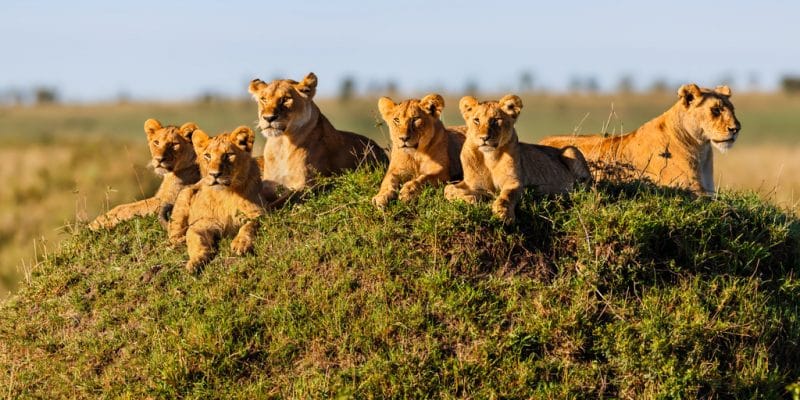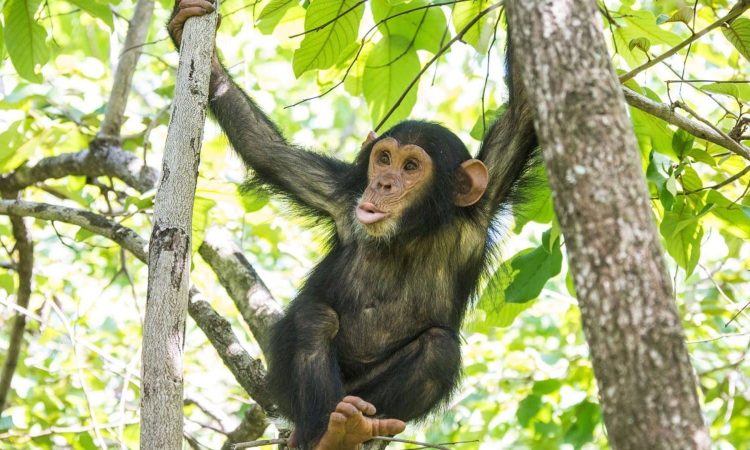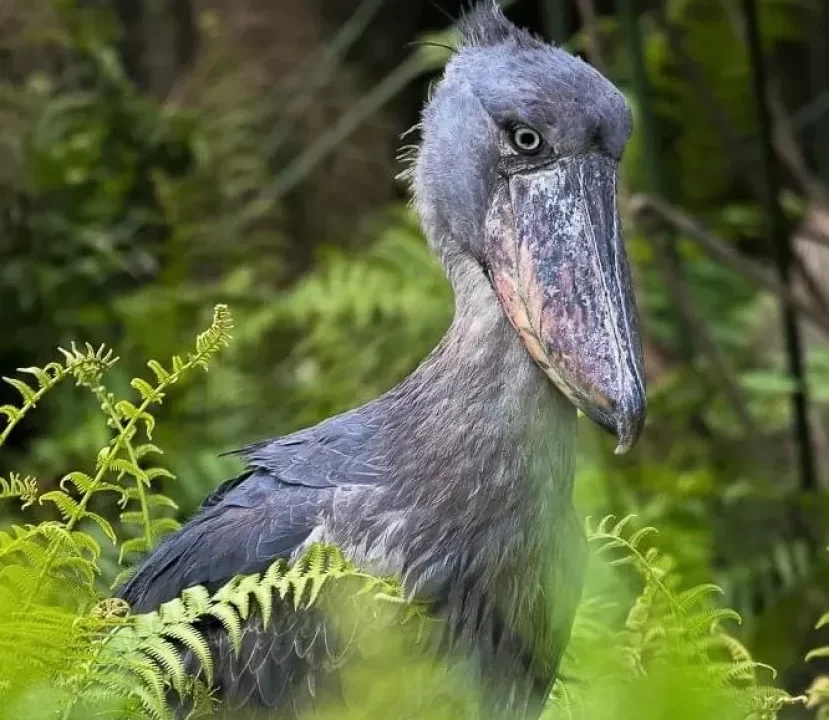When planning a safari in East Africa, A safari in East Africa is one of the most breathtaking travel experiences anyone can dream of. From the endless savannahs of the Serengeti to the lush forests of Uganda and Rwanda, the region is rich with wildlife, culture, and adventure. But to make your trip truly unforgettable, careful planning is key. Here are the most important things to consider when preparing for an East African safari.
1. Choose the Right Destination
One of the first and most important decisions in planning a safari is where to go. East Africa is blessed with world-renowned
safari destinations, but each country offers something unique in terms of
wildlife, landscapes, culture, and overall experience. The right choice depends on your priorities, interests, and travel style.
Kenya – when planning a safari in East Africa
Kenya is often considered the “classic safari” destination, with iconic
wildlife reserves and picture-perfect African savannahs.
•Highlights:
•Maasai Mara: Known for its rolling grasslands, predators (especially big cats), and the dramatic wildebeest migration from July to October.
•Amboseli National Park: Famous for its large elephant herds set against the backdrop of snow-capped Mount Kilimanjaro.
•Tsavo East & West: Vast, less-crowded parks ideal for those seeking wilderness and dramatic scenery.
•Best for: First-time safari-goers, families, and photographers looking for those postcard-perfect African scenes. Kenya also combines well with cultural visits to Maasai villages and coastal relaxation on the Indian Ocean beaches (Mombasa, Diani, Lamu).
Tanzania – when planning a safari in East Africa
Tanzania boasts some of Africa’s most spectacular and expansive landscapes. It’s a top choice for travelers seeking both wildlife and adventure.
•Highlights:
•Serengeti National Park: A UNESCO World Heritage Site and home to the
Great Migration, with 2 million wildebeest, zebras, and gazelles moving in search of greener pastures.
•Ngorongoro Crater: A unique volcanic caldera packed with diverse wildlife, offering a chance to spot the Big Five in a single day.
•Tarangire & Lake Manyara: Smaller parks but rich in elephants, birdlife, and tree-climbing lions.
•Mount Kilimanjaro: Africa’s tallest peak, perfect for adventure-seekers who want to combine safari with trekking.
•Best for: Travelers who want immersive, longer safaris in vast open spaces, adventurers aiming to climb Kilimanjaro, and those seeking a combination of wildlife and post-safari relaxation on Zanzibar’s beaches.
Uganda – when planning a safari in East Africa
Uganda is often called the “Pearl of Africa” thanks to its stunning mix of lush forests, lakes, rivers, and mountains. While it may not have the same vast savannahs as Kenya or Tanzania, it offers a unique combination of primate encounters and classic safari experiences.
•Highlights:
•Kibale National Park: Known as the “primate capital of the world,” with 13 species of primates including chimpanzees.
•Best for: Travelers seeking
primate experiences (gorillas and chimps), nature enthusiasts who love diverse landscapes, and those who want a quieter, less-crowded safari compared to Kenya and Tanzania.
Rwanda – when planning a safari in East Africa
Rwanda has become a rising star in East African tourism, offering a mix of wildlife, luxury, and remarkable cultural experiences. Despite being smaller in size, it delivers high-quality safari adventures.
•Highlights:
•Akagera National Park: A savannah park home to the Big Five, with a mix of game drives and boat safaris.
•Nyungwe Forest: A lush rainforest with chimpanzee tracking and a breathtaking canopy walkway.
•Best for: Travelers who prefer shorter trips with top-notch lodges, those seeking gorilla trekking in a more accessible setting than Uganda, and visitors interested in combining wildlife with cultural tours (such as Kigali’s genocide memorials).
Questions to Ask Yourself Before Choosing
•Do you dream of seeing the Big Five (lion, leopard, elephant, buffalo, rhino)? → Kenya, Tanzania, or Rwanda’s Akagera.
•Is gorilla trekking at the top of your list? → Uganda or Rwanda.
•Do you want to witness the Great Wildebeest Migration? → Kenya (July–October) or Tanzania (December–March and May–June).
•Do you want to pair safari with mountain trekking? → Tanzania (Kilimanjaro) or Uganda (Rwenzori Mountains).
•Are you looking for a mix of luxury and short travel times? → Rwanda.
•Do you want a balance of wildlife and cultural immersion? → Uganda or Kenya.
By matching your dream experience with the strengths of each country, you’ll create a safari that feels tailor-made for you
2. Best Time to Visit – when planning a safari in East Africa
The time of year you choose to travel will dramatically shape your safari experience. Wildlife sightings, weather conditions, park accessibility, and even the cost of your trip are all tied to the seasons. Unlike many destinations, East Africa’s appeal isn’t about summer or winter—it’s about the wet and dry seasons.
Dry Season (June–October & December–February)
This is considered the prime safari season in East Africa.
•Wildlife: Animals concentrate around rivers and waterholes, making them easier to spot. Tall grasses thin out, so predators like lions, cheetahs, and leopards are more visible. This is also when you can witness the Great Wildebeest Migration in the Maasai Mara (July–October).
•Weather: Days are sunny and warm, nights cooler—ideal for game drives. Fewer mosquitoes mean a slightly lower risk of malaria.
•Traveler Experience: Parks can get busy, especially in Kenya’s Maasai Mara and Tanzania’s Serengeti. Lodges and camps book out early, and prices are at their highest.
•Best for: First-time safari-goers, wildlife photographers, and anyone eager to see the Big Five or Migration.
Wet Season (March–May & November)
This is the low season, marked by heavy rains in some regions.
•Wildlife: Animals are more dispersed because water is abundant. However, it’s the time for birdwatching, as migratory birds arrive and landscapes are alive with activity. It’s also calving season in some areas (especially the Serengeti in January–March), offering incredible predator-prey action.
•Weather: Lush green scenery, dramatic skies, and occasional heavy rains. Roads can become muddy and more difficult to traverse, especially in remote parks.
•Traveler Experience: Fewer tourists mean parks feel wilder and more intimate. Lodges often reduce their rates significantly, making luxury camps more affordable. Some smaller lodges or remote camps may close temporarily during the long rains (April–May).
•Best for: Bird lovers, budget-conscious travelers, and repeat safari-goers who want a quieter experience.
Shoulder Months (Just Before or After Peak Season)
These are the sweet spots for many travelers.
•Wildlife: Game viewing is still excellent, though not as concentrated as peak dry season. The Migration is still moving through East Africa, and the scenery is more varied.
•Weather: Less extreme—occasional rain showers keep the landscape green and beautiful without being too disruptive.
•Traveler Experience: Fewer crowds compared to peak months, moderate prices, and a more relaxed atmosphere in lodges and camps.
•Best for: Travelers looking for balance—good game viewing without the premium prices or crowded lodges.
Quick Seasonal Guide by Country
•Kenya & Tanzania:
•Best: June–October (dry, Migration season).
•Shoulder: Late May & early November.
•Uganda & Rwanda:
•Best: June–September, December–February (great for gorilla trekking as trails are drier).
•Wet: March–May, November (harder treks but cheaper permits sometimes available).
3. Budget and Safari Style – when planning a safari in East Africa
Budget Camping Safaris
•What to Expect:
•Accommodation is usually in dome tents or mobile tents with basic bedding. Facilities are shared, and meals are often prepared by a camp cook traveling with you.
•Camps are typically set up inside or just outside the national parks, so you’ll hear lions roaring or hyenas laughing in the night—a raw, thrilling experience.
•Pros: Incredibly immersive, cheapest way to do safari, highly social if traveling in a group.
•Cons: Limited comfort (shared bathrooms, cold showers, no frills), longer transfer times if joining group tours, and sometimes less flexibility with itineraries.
•Best For: Backpackers, students, young travelers, or anyone who values adventure and affordability over luxury.
Mid-Range Lodges and Tented Camps
•What to Expect:
•Accommodation is typically in comfortable lodges or permanent tented camps with en-suite bathrooms, running water, and electricity.
•Meals are more varied, often buffet-style or three-course dinners served in a dining area.
•Many offer extras like swimming pools, guided walks, or cultural visits to nearby villages.
•Pros: Strikes a balance between comfort and cost. You still get an authentic safari feel without sacrificing basic comforts like private bathrooms and decent beds.
•Cons: Less intimate than luxury camps, and sometimes located just outside the parks (meaning a short drive to game areas).
•Best For: Couples, families, or travelers who want comfort without splurging on high-end luxury.
Luxury Safaris
•What to Expect:
•Accommodation ranges from stylish lodges to glamorous tented camps with king-sized beds, hot showers, private decks, and sometimes even plunge pools.
•Gourmet dining, sundowner cocktails, spa services, and highly personalized service are the norm.
•Activities may include extras like hot-air balloon rides over the Serengeti, private game drives with your own guide, or exclusive bush dinners under the stars.
•Pros: Ultimate comfort, privacy, and exclusivity. Great for honeymoons, special occasions, or travelers who want to maximize the once-in-a-lifetime factor.
•Cons: Very expensive, with rates that can exceed $1,000 per night at top camps. Sometimes feels a bit detached from the “roughing it” spirit of safari.
•Best For: Honeymooners, retirees, high-end travelers, or anyone seeking a bucket-list-level experience.
Hidden Costs to Remember
No matter your safari style, your budget must also cover more than just where you sleep:
•Park entry fees: Ranging from $40 to $100+ per person per day, depending on the park.
•Guides & drivers: Usually included in tour packages, but tips are customary.
•Permits: Especially for gorilla trekking (Uganda & Rwanda, $700–$1,500) and chimp tracking ($200–$250).
•Transport: Road transfers or domestic flights between parks can add significantly to your budget.
•Extras: Drinks, laundry, cultural activities, or optional experiences like hot-air balloon safaris.
Choosing the Right Fit
When deciding your safari style, ask yourself:
•Do I want a raw, close-to-nature adventure or a comfortable holiday with luxury touches?
•Am I traveling solo, as a couple, or with family? (Group safaris are cheaper; private tours cost more but offer flexibility.)
•How much am I willing to spend per day once all costs—lodging, fees, transport—are factored in?
A good rule of thumb:
•Budget: $100–$200 per day.
•Mid-range: $200–$500 per day.
•Luxury: $500+ per day, sometimes well into the thousands.
4. Travel Documents & Health Precautions
Before setting off on a safari in East Africa, it’s crucial to prepare the right paperwork and safeguard your health. A little planning in advance saves you from stress at borders, airports, or even in the bush. Here’s what to keep in mind:
•Visas
Most East African countries require tourists to obtain a visa before entry.
•Kenya, Uganda, and Rwanda offer the East Africa Tourist Visa, which allows multiple entries between the three countries for up to 90 days. This is a cost-effective option if you plan to explore more than one destination on your trip.
•Tanzania requires a separate visa, which can be applied for online or on arrival (depending on nationality).
•Always check the latest requirements on official government websites before traveling, as rules can change.
•Vaccinations and Health Checks
Health precautions are especially important when traveling to regions with tropical diseases:
•Yellow fever vaccination: Often mandatory, and proof of vaccination (a yellow card) may be required to enter or even transit through some countries.
•Hepatitis A and Typhoid: Recommended since food and water contamination can occur in rural or remote areas.
•Malaria: East Africa is a malaria-prone region, so talk to your doctor about antimalarial medication (e.g., Malarone, Doxycycline, or Lariam) and pack mosquito repellent. Sleeping under treated nets in lodges and camps is also standard practice.
•Routine vaccines: Ensure your tetanus, measles, and polio vaccinations are up to date.
Some countries also ask for a negative COVID-19 test certificate depending on current regulations, so check requirements before departure.
•Travel Insurance
Safari activities often take you far from urban centers, so having comprehensive travel insurance is non-negotiable. Make sure your plan covers:
•Medical emergencies, including evacuation by air ambulance (essential in remote areas).
•Adventure activities such as gorilla trekking, hot air balloon rides, hiking, or rafting.
•Trip cancellations or delays, which can happen due to weather, political unrest, or wildlife-related restrictions.
Always carry a copy of your insurance policy and emergency contact numbers with you.
•Other Essentials
•Carry a valid passport with at least 6 months’ validity from your entry date.
•Have multiple photocopies of your passport and visa in case you lose the original.
•Keep a digital backup of all important documents stored securely online (e.g., in your email or cloud storage).
5. Paking Essentials
• Clothing: Neutral colors (khaki, beige, olive) help you blend in. Avoid bright colors and camouflage patterns. Pack layers since mornings and evenings can be cold.
• Footwear: Comfortable walking shoes or boots for treks.
• Gear: Binoculars, camera with extra batteries, power bank, insect repellent, sunscreen, and a reusable water bottle.
• Documents: Passport, visa, vaccination card, travel insurance papers.
6. Wildlife Encounters – when planning a safari in East Africa
One of the biggest draws of an East African safari is the chance to see animals in their natural habitat. Each country and park offers unique experiences, so knowing what to expect helps you plan your trip more effectively.
•The Big Five
The famous “Big Five” — lion, elephant, buffalo, leopard, and rhino — remain the top attraction for most safari-goers.
•Kenya & Tanzania are the best places to spot all five. The Serengeti, Maasai Mara, and Ngorongoro Crater are particularly renowned for lion prides, large elephant herds, and stealthy leopards resting in acacia trees.
•Rhinos, however, are more elusive. Ol Pejeta Conservancy in Kenya and Ngorongoro Crater in Tanzania are among the best places to see both black and white rhinos.
•Primates
East Africa is also famous for primate trekking, which offers a different kind of safari adventure.
•Uganda: Bwindi Impenetrable Forest and Mgahinga Gorilla National Park are top destinations for mountain gorilla trekking. Kibale Forest National Park is also known as the “primate capital of the world,” home to 13 primate species, including chimpanzees.
•Rwanda: Volcanoes National Park is equally iconic for gorilla trekking, with well-managed permits and guided hikes.
Gorilla and chimpanzee trekking requires a permit, and treks can take several hours through dense forest, but the reward of observing these endangered animals up close is unforgettable.
•Bird Watching
East Africa is a paradise for bird enthusiasts, with over 1,000 recorded species across the region.
•Uganda is considered one of the best birding destinations in the world, with species like the rare shoebill stork in Mabamba Swamp.
•Kenya’s Rift Valley lakes (Naivasha, Nakuru, Baringo) attract flamingos, pelicans, and countless water birds.
•Tanzania also boasts excellent birding, especially in Tarangire National Park and along the Serengeti wetlands.
•Other Unique Wildlife
•Cheetahs are most commonly seen in the Serengeti and Maasai Mara.
•Wild dogs, an endangered species, can be found in Selous Game Reserve (Tanzania) and Laikipia (Kenya).
•Hippos and crocodiles thrive in rivers and lakes across the region, especially along the Nile in Uganda and the Mara River in Kenya.
•Seasonal spectacles, like the Great Migration, feature millions of wildebeest and zebras moving across the Serengeti–Mara ecosystem.
•Responsible Wildlife Viewing
As thrilling as these encounters are, remember that the animals are wild and their space must be respected:
•Never feed animals — it disrupts their natural diet and behavior.
•Stay inside your vehicle during game drives, unless your guide confirms it’s safe to exit.
•Keep a safe distance — use binoculars or zoom lenses instead of trying to get too close.
•Avoid crowding animals with multiple vehicles; this causes stress and can even alter their movement.
•Follow your guide’s instructions at all times — they’re trained to keep both you and the wildlife safe.
7. Local Culture & Etiquette – when planning a safari in East Africa
A safari is not only about the landscapes and wildlife—it’s also about the people who call East Africa home. The region is made up of hundreds of ethnic groups, each with its own traditions, languages, and ways of life. By approaching these cultures with respect and openness, travelers can enrich their own experience while ensuring tourism benefits local communities.
Respectful Photography
•Always ask permission before taking photos of people. Many locals appreciate being asked, and some may decline—it’s important to respect their wishes.
•Some communities, particularly the Maasai in Kenya/Tanzania or Batwa in Uganda, may request a small fee for photographs. This is normal and helps support livelihoods.
•Avoid snapping pictures of sensitive sites (e.g., military buildings, government offices) or people without consent.
Language & Greetings – when planning a safari in East Africa
•A few words in the local language can break barriers instantly:
•Swahili greetings (widely spoken in Kenya, Tanzania, and parts of Uganda):
•Jambo (Hello)
•Asante (Thank you)
•Karibu (Welcome / You’re welcome)
•In Uganda and Rwanda, local greetings vary (e.g., Oli otya in Luganda, Muraho in Kinyarwanda).
•Even simple greetings show respect and willingness to engage. Locals often respond warmly to the effort.
Dress Modestly & Appropriately
•While safari attire in parks can be casual, when visiting villages, towns, or cultural sites, it’s respectful to avoid revealing clothing.
•In Muslim coastal areas (like Zanzibar or Mombasa), women may prefer to cover shoulders and knees.
Community-Based Tourism
Supporting local communities directly is one of the best ways to make your safari meaningful:
•Village Visits: Learn about daily life, farming, cooking, and traditions. Popular options include Maasai villages in Kenya/Tanzania or Batwa communities near Bwindi in Uganda.
•Craft Markets: Buy locally made beadwork, carvings, textiles, or baskets instead of mass-produced souvenirs. It supports artisans and preserves traditional skills.
•Homestays & Cultural Lodges: Some operators offer overnight stays with local families or in community-owned camps, giving deeper cultural immersion.
•Guided Walks: Take a village or nature walk led by local guides who share insights about plants, farming, and cultural practices.
Be Aware of Cultural Sensitivities
•Religion: Christianity and Islam are the main religions, but traditional beliefs also play a role. Be respectful when visiting places of worship—remove shoes if required and avoid disruptive behavior.
•Food & Etiquette: Meals may be shared communally—accepting food offered is a sign of respect. If you decline, do so politely.
•Body Language: Public displays of affection may be frowned upon in rural areas. Handshakes are common greetings, though elders may be greeted more formally.
Why It Matters
Tourism is a lifeline for many rural communities in East Africa. By engaging respectfully, travelers:
•Support local livelihoods through income from crafts, tours, and performances.
•Help fund education and healthcare in villages linked to tourism.
•Encourage cultural preservation, as communities keep traditions alive for future generations.
8. Booking with the Right Tour Operator
Choosing the right safari operator is one of the most important decisions you’ll make. A good operator ensures not just comfort, but also safety, cultural sensitivity, and a richer wildlife experience. Here’s what to look out for:
•Reputation and Reviews
Do your homework by reading online reviews, testimonials, and safari forums. Platforms like TripAdvisor, SafariBookings, and even social media groups provide honest feedback from past travelers. Consistently positive reviews are a good sign, but pay attention to how operators handle complaints too—it shows how reliable and professional they are.
•Experience and Specialization
Not all operators are the same. Some specialize in luxury safaris, others in budget camping, gorilla trekking, bird watching, or family-friendly tours. Pick one with proven expertise in the specific park or experience you want. For example, a company that has been guiding in Serengeti for years will know the best routes for the Great Migration, while a Ugandan operator specializing in gorilla trekking will secure the right permits on time.
•Safety Standards
Safari vehicles should be well-maintained 4x4s (Land Cruisers or Land Rovers are most common) with seatbelts, pop-up roofs, and emergency equipment. Ask whether the guides are licensed, trained in first aid, and familiar with handling wildlife encounters. Reliable operators won’t compromise on safety, even if it means altering your itinerary due to weather or road conditions.
•Flexibility and Customization
Some operators offer fixed itineraries, which are good for first-timers or those on a strict budget. Others can tailor trips to your preferences—whether you want extra time in a specific park, a combination of game drives and cultural tours, or even mixing camping with lodge stays. Flexibility ensures you get the most out of your safari rather than following a rigid plan.
•Transparency in Pricing
A trustworthy operator provides clear quotes, breaking down what’s included—such as park fees, accommodation, meals, transport, and permits. Be wary of operators who give vague pricing or keep adding hidden costs during your trip.
•
The best operators employ local guides who understand the terrain, wildlife behavior, and cultural norms. Bonus points if they actively support conservation projects or community initiatives. By choosing such an operator, you contribute directly to wildlife protection and local livelihoods.
9. Sustainability & Conservation
Choose Eco-Friendly Accommodation
Many lodges and camps are designed with conservation in mind. Look for properties that:
•Use renewable energy like solar power instead of diesel generators.
•Recycle wastewater and reduce water usage in drought-prone areas.
•Employ local staff and source food from nearby farms.
•Contribute a portion of profits to wildlife conservation or community projects.
Staying at such places means your visit directly benefits both nature and people.
•Minimize Plastic Use
Single-use plastics, especially bottles and bags, are a huge environmental threat. Many parks have already banned plastic bags. Bring a reusable water bottle and refill it at your lodge, and avoid products with unnecessary packaging. Even small choices like carrying your own reusable shopping bag make a difference.
•Follow Park Rules and Guidelines
Protected areas have strict codes of conduct for a reason. Respecting them keeps both visitors and wildlife safe:
•Stay inside your vehicle during game drives unless a guide says it’s safe.
•Keep noise levels low to avoid disturbing animals.
•Do not feed or touch wildlife—human food can make animals sick and alter their natural behavior.
•Stick to designated tracks to prevent damaging fragile vegetation.
•Support Community-Based Tourism
Sustainable safaris aren’t just about wildlife—they’re also about people. By visiting cultural villages, hiring local guides, or buying handmade crafts, you help ensure that communities benefit directly from tourism. This, in turn, reduces poaching and deforestation, since locals have an incentive to protect the wildlife and land around them.
•Travel in Small Groups
Smaller groups create less disturbance to wildlife and ensure a more intimate, authentic experience. Large convoys of vehicles around an animal not only stress it out but also ruin the magic of the moment.
•Offset Your Carbon Footprint
Flying between parks and countries increases your carbon impact. Consider offsetting emissions by contributing to reforestation projects, many of which operate locally in Kenya, Uganda, and Tanzania. Some safari companies include this automatically in their pricing.
10. Extra Activities Beyond Game Drives
•Hot Air Balloon Safaris
Floating silently above the savannah at sunrise is one of the most magical safari experiences. Available in places like the Serengeti (Tanzania) and Maasai Mara (Kenya), hot air balloon safaris let you watch wildlife from the skies as the golden light spreads across the plains. It’s common to spot elephants, giraffes, and large herds of wildebeest from above. Most balloon rides end with a champagne breakfast in the bush, making it both adventurous and luxurious.
•Mountain Hiking and Trekking
East Africa is home to iconic peaks:
•Mount Kilimanjaro (Tanzania): The highest mountain in Africa, attracting climbers from all over the world. It’s a challenging trek, but no technical climbing is required, making it achievable for fit travelers.
•Mount Kenya (Kenya): Less crowded than Kilimanjaro but equally breathtaking, with glaciers, lakes, and rare wildlife.
•Rwenzori Mountains (Uganda): Known as the “Mountains of the Moon,” offering dramatic scenery and a unique hiking experience.
Trekking isn’t just about reaching the summit—it’s also about exploring diverse ecosystems, from rainforests to alpine zones.
•Beach Escapes
After days of dusty game drives, relaxing on a beach is the perfect way to unwind. East Africa’s coastline offers some of the world’s most beautiful beaches:
•Zanzibar (Tanzania): Famous for its white sands, turquoise waters, spice plantations, and historic Stone Town.
•Lamu (Kenya): A UNESCO World Heritage site with a laid-back vibe and traditional Swahili culture.
•Mombasa Coast (Kenya): Popular for diving, snorkeling, and water sports.
Combining safari and beach holidays has become a classic East African experience.
•Boat Safaris and River Cruises
Exploring wildlife from the water gives a fresh perspective. In Uganda, a Nile River cruise at Murchison Falls offers close encounters with hippos, crocodiles, and waterbirds. Lake Naivasha in Kenya also provides boat trips where you can watch fish eagles and grazing giraffes along the shores. These experiences are quieter than vehicle safaris and often allow for excellent photography.
•Cultural Tours
Meeting local communities enriches your safari by giving you insight into East Africa’s diverse traditions and ways of life. You can:
•Visit Maasai villages in Kenya or Tanzania and learn about their herding culture and beadwork.
•Experience Batwa community tours in Uganda, where former forest dwellers share stories about their traditional way of life.
•Explore Swahili culture in coastal towns like Zanzibar and Lamu.
Cultural visits not only broaden your understanding but also directly support local families through tourism income.
•Adventure and Active Experiences
For thrill-seekers, options abound:
•White-water rafting on the Nile in Jinja, Uganda (one of the world’s best rafting spots).
•Cycling safaris in places like Hell’s Gate National Park in Kenya.
•Horseback safaris in private conservancies, allowing you to get closer to wildlife without the noise of an engine
Final Thoughts
Planning a safari in East Africa is more than just booking a trip—it’s about preparing for an adventure that combines nature, culture, and unforgettable encounters with wildlife. With the right planning—choosing your destination, timing, budget, and packing wisely—you’ll be set for the journey of a lifetime.
Whether it’s witnessing a lion hunt at dawn, trekking through misty forests to see gorillas, or watching millions of wildebeest thunder across the plains, an East African safari is truly one of the greatest adventures on Earth.






